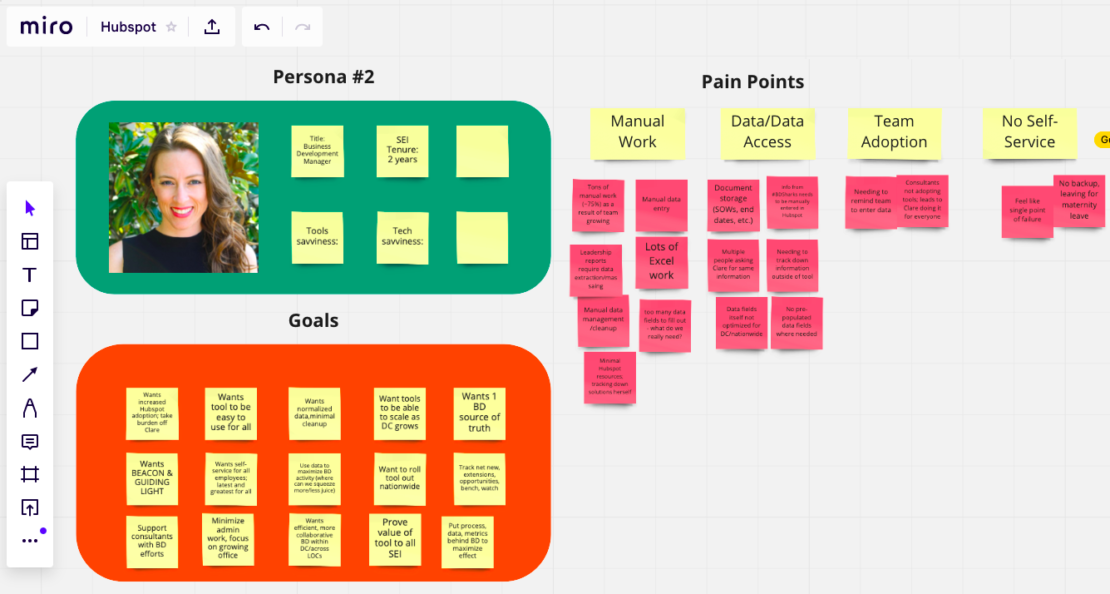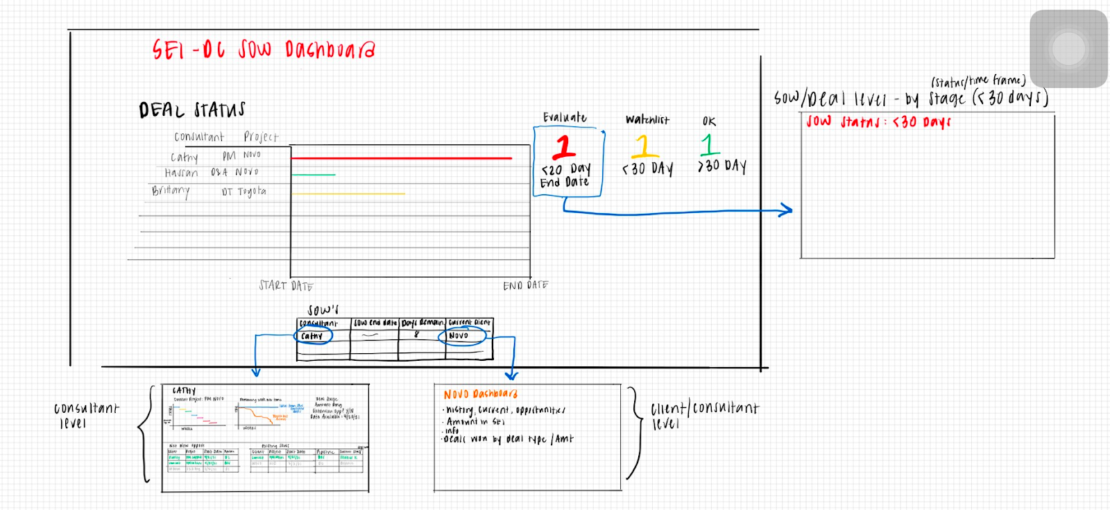
Earlier this year, Elise Joyce kicked off her SEI data & analytics internship, a program based around a series of rotations that focus on real-world applications of concepts like data strategy, data engineering, data visualization, data science, data journalism, and design thinking. “When I first saw design thinking as an internship rotation, I thought it had nothing to do with problem-solving,” Elise recalls.
But after completing the design thinking rotation, she found that it had a profound impact on her approach to problem-solving. “With my STEM background, I sometimes find myself diving into a problem the same way I’d solve a differential equation,” Elise reflects. “I always think ‘given a dataset, a problem, or a set of conditions — how do we find the right solution?’ I really focus on all the work that needs to be done to find the solution without leaving room for exploration. With design thinking it’s different. We’re actually defining the solution by defining the problem too.”
Building on the foundational concepts from her previous rotation in data strategy, the design thinking exercises allowed Elise to dig a bit deeper into the goals, motivations, frustrations, and opportunities of real end-users. She found herself asking questions like:
- Who is going to be consuming this data?
- What is the user trying to accomplish?
- Why might the user want or need this specific data?
- What decisions or actions does the data support?
- Are there manual tasks that could be automated?
- What kinds of manual data analysis could the system automate for the user?
Elise compares the design thinking framework to the scientific method. “First we observed and met with different user groups, then we created personas,” she observes. “Then, we empathize, define, and ideate. Finally, we experimented with our prototypes, tested with users, and evaluated our findings against their desired outcomes and needs.”

In the rapid prototyping phase of the design thinking rotation, Elise created low-fidelity mockups for critical use cases with each user group. In addition to identifying and communicating what an ideal solution would accomplish, Elise also used her prototypes to perform early user testing. She clicked through key workflows and quickly updated them as needed based on real-time user feedback.

Elise is now completing her data engineering rotation, and she has had some time to reflect back on the lessons she learned in design thinking. “A key takeaway for me — when tackling a problem — is to always take creative risks and value the creative mindsets around you,” she says. “Always ask more questions than you can answer.”







